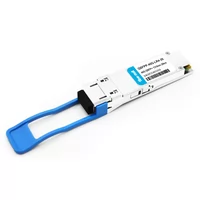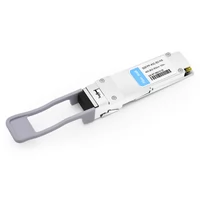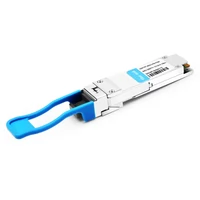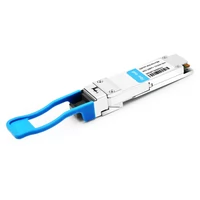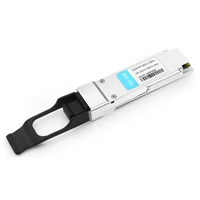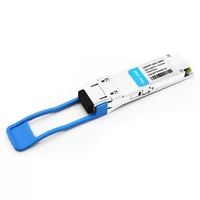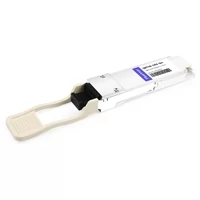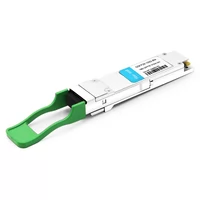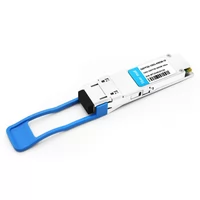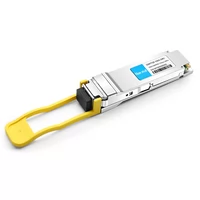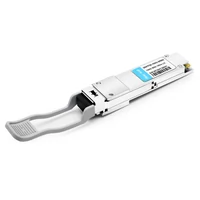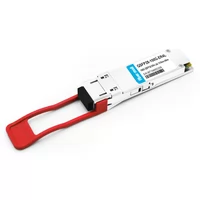In the present day’s fast-changing networking world, one cannot overemphasize the need for optical communications that are not only fast but also reliable and scalable. Quadrature Small Form-factor Pluggable (QSFP) transceivers have become key in satisfying these requirements, more so in Multi-Mode Fiber (MMF) optic networks. This write-up focuses on QSFP transceivers by looking at various Cisco-compatible solutions that facilitate smooth integration, boost performance levels, and save costs. Technicalities, compatibility concerns as well and deployment advantages will be considered, thus giving readers an all-around understanding of how they work best with network infrastructures, thereby improving data transfer rates and the overall efficiency of systems involved in data transmission.
Table of Contents
ToggleWhat is a QSFP Transceiver and How Does It Work?
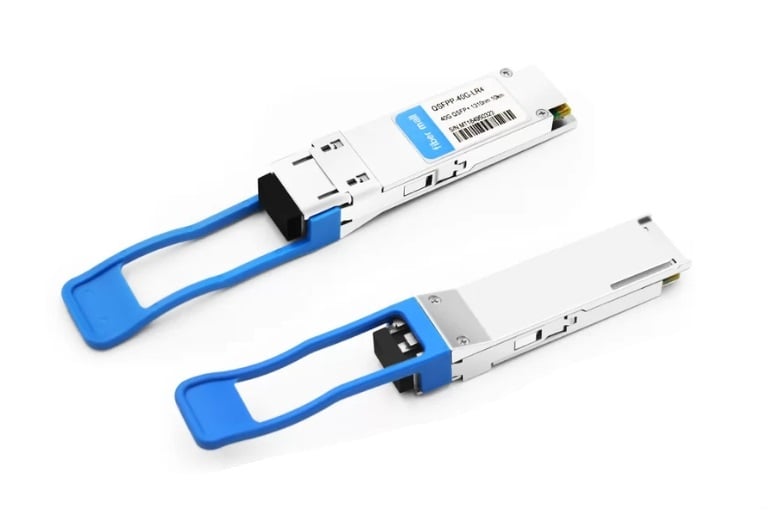
Understanding QSFP Technology
Compact, hot-swappable devices that support high-speed data transfer over optical fiber or copper cables are Quadrature Small Form-factor Pluggable (QSFP) transceivers. Often used in areas such as high-performance computing, data center networks, and enterprise communication systems, they are able to send out signals by modulating laser light and then convert received optical signals back into electrical data with photodetectors. QSFP modules can process massive amounts of information quickly because they have a maximum data rate of 100 Gbps, which allows them to efficiently handle large volumes of data traffic, thus making them indispensable in modern high-capacity network infrastructures.
Types of QSFP Modules
Different network needs are met by different QSFP modules. Among the main types are:
- QSFP+: These can sustain data rates of up to 40 Gbps and are commonly used in data center and enterprise applications.
- QSFP28: Modules under this type can handle as much as 100 Gbps hence most suitable for environments with high networking demands.
- QSFP-DD (Double Density): This is a future-oriented design whose modules will be able to support speeds of up to 400 Gbps while providing more ports per unit area and better efficiency overall.
Each kind of QSFP module has its own transmission capacity, power consumption levels, and compatibility features which allow network planners or architects more flexibility when it comes to matching them with specific usage scenarios.
Applications of QSFP Transceivers
QSFP transceivers are necessary to improve data transmission speed across different types of advanced networks. For example, in data centers, they connect servers, switches, and storage systems, thereby enabling the large-scale flow of information as well as high-performance computing. Another area where these modules are used is enterprise network architecture, which ensures that mission-critical applications have reliable connections that can be easily scaled up when the need arises. In telecommunications networks, long-haul and metro solutions are supported by these transceivers, thus making it possible for data to be efficiently transferred over long distances. Also, within broadband service provider networks, they play a crucial role in the realization or improvement of broadband communication services. QSFP transceivers are very important components in any modern dynamic network infrastructure because they can perform many functions thanks to their flexibility and high data rate capabilities.
How to Choose the Right QSFP Module for Your Needs?
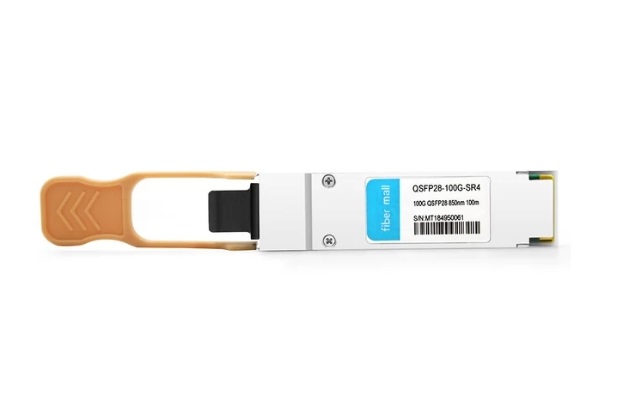
Factors to Consider: 40G vs 100G
While choosing between 40G and 100G QSFP modules, one must consider numerous important factors:
- Bandwidth Requirements: Evaluate the current bandwidth of your network and its future needs. For moderate traffic, 40G might be sufficient, but if you require higher-speed data transfers because of high-bandwidth applications, then it is recommended to use 100G.
- Infrastructure Compatibility: Look into your present infrastructure; some organizations may need newer equipments or upgrades in their infrastructures to support 100Gs while others can work with them using older set ups which are compatible with only 40Gb/s transceivers.
- Cost: In addition to module prices themselves also take into account infrastructure upgrade costs as well as operational expenditure. Usually more costly per unit performance wise however they do offer greater robustness than cheaper alternatives like 40GBASE-LR4 for instance.
- Latency: Latency refers to the time delay when sending packets from the source device till they reach the destination host over a given network. As a rule, financial trading systems or video streaming platforms should have low latency levels hence such applications require real-time delivery of data so that users experience nearly zero delays during their sessions thus making this criterion critical for selecting appropriate optics i.e., between these two speeds (40g vs 100g).
- Power Consumption: Power usage increases with higher rates as more energy is required to transmit larger quantities of bits per second through fiber optic cables, which results in increased heat generation within devices that consume electrical power. Therefore, power supplies connected to these systems must have enough capacity; otherwise, there will be frequent failures due to overheating issues caused by overloading caused by the lack thereof or not being aware of such demands posed upon them when utilizing hundred-gigabit interfaces.
- Future Scalability: If one expects significant growth in data traffic within his/her organization, then opting for hundred giga bit interfaces would save money on expensive upgrades needed frequently because it provides better scalability options compared to forty gigabits/sec transceivers.
By considering all these points carefully, you will be able to choose the right QSFP module for your network that is both cost-effective and meets its needs.
Compatibility with Cisco and Other Brands
When picking out QSFP modules, one must make sure that they are compatible with Cisco and other manufacturers of network equipment. Normally, Cisco QSFP modules are made according to the rules of the industry and, hence, can be used together with other brands that abide by such guidelines. This means, for example, if Arista, Juniper, or Brocade companies were to produce their own versions of the QSFP module, they would most likely work with Cisco devices, provided both devices support the same protocols and share physical layer specifications.
But remember, always verify whether these modules will work on your specific devices or firmware versions before buying them because sometimes things may not go right due to a lack of awareness about this fact. In order to achieve a seamless integration process, Cisco has come up with a number of compatibility matrices and technical documentation that should be followed strictly. You can also check if third-party QSFPs perform better than originals, but you need to test all features based on required performance levels and reliability standards. Don’t just look at IEEE or MSA compliance alone since it might lead to problems later on.
Network administrators can blend various types/brands of QSFPs into their existing infrastructure by reviewing compatibility documentation carefully while utilizing vendor support resources for a greater success rate during troubleshooting issues related to interoperability between different hardware/software components within enterprise network environments, thus resulting in enhanced efficiency levels as well as cost savings too.
Single-Mode vs Multi-Mode Fiber (SMF vs MMF)
Single-Mode Fiber (SMF) and Multi-Mode Fiber (MMF) are the two main types of optical fibers used in network communications with each having its own characteristics and applications.
Single-Mode Fiber (SMF):
- Core Diameter: SMF has a small core diameter of around 8-10 microns through which only one mode of light can pass.
- Distance: This fiber is designed for long-distance communication, often spanning distances greater than 10 km without significant signal loss.
- Bandwidth: SMF has a higher bandwidth capacity than MMF and can, therefore, support faster data transmission rates.
- Applications: It is mainly used in telecommunications and other areas where there is need for excellent performance over very long distances of transmission.
Multi-Mode Fiber (MMF):
- Core Diameter: MMF has a larger core diameter usually between 50 to 62.5 microns, allowing it to support multiple light modes.
- Distance: MMFs are ideal for short-distance connections that do not exceed 550 meters due to high modal dispersion, which restricts the effective range of these fibers.
- Bandwidth: Although MMFs have lower bandwidth than SMFs, they still provide enough bandwidth for data center and LAN applications.
- Applications: They are most suitable for short links within buildings or on campuses where cost-effective termination methods are desirable.
Both single-mode and multi-mode fibers are necessary components in modern networks; however, the choice between them largely depends on such factors as transmission distance requirements, bandwidth capacity needs, and budget limitations. Choosing an appropriate type of fiber optic cable is crucial to ensuring that network installation performs optimally in terms of both desired results achieved and money saved.
What are the Key Specifications of QSFP Modules?
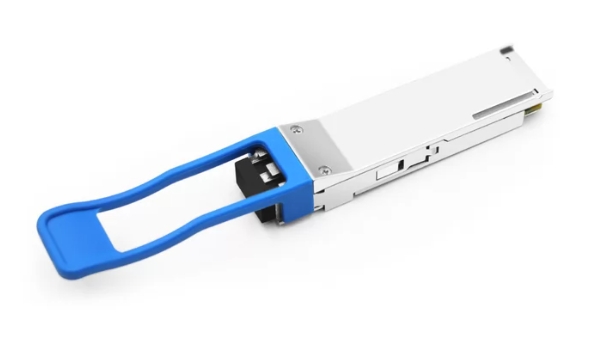
Understanding Optical Transceiver Module Specifications
Optical transceiver modules are the basics of modern fiber optic communication systems as they connect optical fiber with device hardware. Considerations for these devices are as follows:
- Form factor: The physical size and shape of the module should be such that it can fit into any given network equipment. Common examples include SFP (Small Form-factor Pluggable), SFP+ (Enhanced Small Form-factor Pluggable), QSFP (Quad Small Form-factor Pluggable) and QSFP+.
- Data rate: This indicates how fast data is transmitted; different modules have different capabilities here, ranging from 1 Gbps for older SFP modules to over 100 Gbps with modern QSFP28 optics or higher.
- Wavelength: The wavelength of light used by a given type of transceiver limits where it can be used and what kind of fiber is required; typically 850nm, 1310nm or 1550 nm for multi-mode or single mode fibers respectively would suffice most applications.
- Distance: Transceivers are rated to work over certain distances – from meters in short-range multi-mode applications up to tens or hundreds of kilometers when working on long-haul single-mode fibers.
- Connector Type: The type(s) of connectors supported by a particular module will affect its easy setup as well compatibility with existing cabling infrastructure hence LC, SC and MPO among other types may be used.
- Digital Diagnostics Monitoring (DDM): With this feature one can monitor various parameters in real time such as temperature, voltage, laser bias current and optical output power which helps ensuring reliability during operation as well aid troubleshooting too.
By observing these specifications, it becomes easier to identify the right transceiver for given networking needs, thereby maximizing performance while achieving interoperability within fiber optic systems.
40GBASE-SR4 and 40G QSFP Modules
40GBASE-SR4 refers to a standard used in 40 Gigabit Ethernet for multi-mode fiber applications. It uses parallel optics and typically utilizes MPO/MTP connectors, allowing for transmission of data over 4 lanes, each lane running at 10 Gbps. This configuration makes it cost effective to deploy over short distances, with a maximum reach of 100 meters on OM3 multi-mode fiber and up to 150 meters on OM4 multi-mode fiber.
Modules marked as 40G QSFP (Quad Small Form-factor Pluggable) are designed in such a way that they can fit into dense networking environments while offering maximum flexibility. They have the ability to support different standards, which include 40GBASE-SR4 and also 40GBASE-LR4. The beauty of the QSFP form factor is that it integrates four independent channels where each channel can run up to speeds of ten gigabits per second, hence enabling aggregation of bandwidths ranging from forty gigabits per second upwards. Besides this feature being hot-pluggable modules, it also has digital diagnostic monitoring, commonly abbreviated as DDM, which enables real-time tracking of performance levels.
The use cases for an enterprise would be if they want their network infrastructure design improved so as to achieve higher bandwidths with scalability options for future growth, then adopting either or both technologies, i.e., using these two together or separately, will meet those needs perfectly well because through leveraging them organizations shall attain robustness required by modern data-hungry applications along with cloud computing environments.
Exploring QSFP28 and 100G QSFP Specifications
The quad small form-factor pluggable 28 (QSFP28) modules represent the next step in faster networking, bringing support for 100 Gigabit Ethernet (100 GbE) across single-mode and multimode fiber. These modules incorporate four independent channels of 25 Gbps each, enabling data rates of up to 100 Gbps. This kind of module is versatile because it supports different standards, such as those needed for short-reach applications like the 100GBASE-SR4 or long-reach requirements such as those found in the 10km range over single mode fiber optic cables covered by standards like the 100GBASE-LR4.
Designed specifically with data centers and high-performance computing environments in mind, these devices can scale easily while remaining efficient enough to serve various needs within a network running at this speed. Hot-swappable flexibility is provided so that addition or removal does not disrupt operation; digital diagnostics monitoring gives operators an at-a-glance view of current conditions, including temperature, voltage, and optical power level readings, among others – all contributing towards greater reliability together with simplified management capabilities.
With 100G QSFP modules based on QSFP28 technology as well as other similar products installed throughout their infrastructure design options become available which allow architects create highly reliable systems capable of supporting vast amounts of data traffic generated by bandwidth-hungry applications associated with modern digital transformations.
How to Install and Use QSFP Modules?
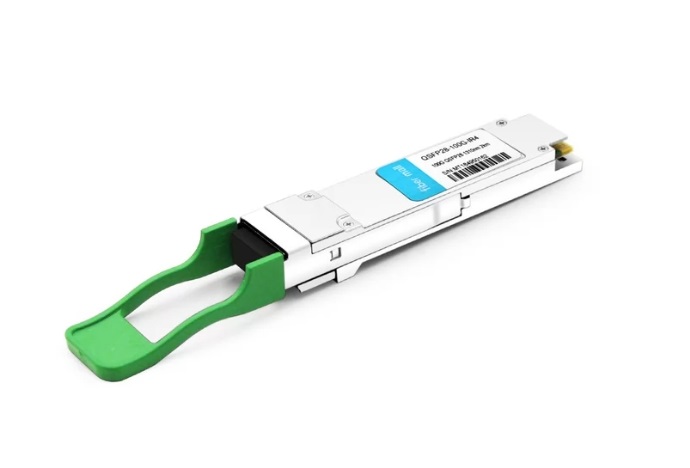
Installation Steps for QSFP Transceivers
- Test Compatibility: Validate whether or not the QSFP transceiver is compatible with your network switch/router; check what types and models of transceivers are supported by referring to documentation from that device.
- Power Off the Device: It is best practice to power down network devices before installing them or at least to disable the specific ports when doing so in order that no electrical damage can occur or any other kind of corruption ruin data.
- Remove Dust Cap: Take off both protective caps (or rubber plugs) carefully covering each end, one side being on the QSFP module itself while the other is situated somewhere within the corresponding jack on a networking box. At this stage, everything should remain clean as much as possible, which means these steps are obligatory for maintaining the cleanliness of the optical parts.
- Insert Module: Line up optic module with appropriate port then slowly push it inside until there’s an audible click sound which shows its proper seating in place; don’t forget about engaging release latch to secure transceiver after insertion has been done.
- Connect Fiber Cable: Ensure connectors of necessary fiber cable are tidy enough, devoid any dirty spots such like dust particles or small fragments lying around etc., and join them together tightly by pushing into related positions until they snap together firmly.
- Enable Port / Power Up Device: If you have powered off the whole machine, turn it on again now; otherwise, just enable a particular port through the management interface provided by this hardware. Finally, keep track of LED indicators displayed on the front panel indicating different statuses of currently installed modules, including those located at the backside near connections used for plugging in optics, which will show if everything is working fine or not according to their blinking patterns.
- Check Link Establishment / Test Connectivity: Use applicable tools available within the network administration system supporting your equipment set-up configuration where necessary so as to confirm presence as well as proper functioning between two ends linked via QSFP transceivers themselves such as link status detection mechanism alongside some signal power measurement method also known among technicians e.t.c. It’s worth monitoring error rates too.
By following these instructions, you can ensure smooth installation process of QSFP transceivers and minimize network downtime while maximizing reliability.
Troubleshooting Common Issues
- No Connection or Connectivity: If there is no connection between devices, the first thing to do is verify that the transceiver and fiber optic cable are seated in full and connected properly. Ensure correct configuration of both device and port settings. Check if there is any problem with firmware or software of the network device and update it as required.
- Connectivity Interruption or High Error Rate: Frequently intermittent connectivity can be attributed to damaged or poor-quality fiber optic cables. Look for physical damages on the cables then replace them if necessary. Clean connectors to remove dust or other debris. It could also be worth checking for electromagnetic interference (EMI) from nearby electric devices.
- Unrecognized Transceiver: If a transceiver is not recognized by the network device, ensure that it has compatibility with such device. Make sure that the insertion of transceivers is done correctly and confirm whether the particular model is supported by the firmware of this device. Sometimes restarting equipment or reinitializing ports may help solve recognition problems.
By following these steps one after another, administrators can secure their networks against failure while at the same time ensuring optimal performance throughout different systems within a given network structure which enables machines talk each other effectively.
Maintaining and Handling QSFP Cables and Modules
The longevity and optimal performance of QSFP cables and modules greatly rely on their proper maintenance and handling. Below are some recommended practices:
- Frequent Cleaning: Dust, oils, and other contaminants may affect the quality of a signal. Therefore, connectors must be cleaned regularly with appropriate fiber optic cleaning tools and solutions to remove dirt.
- Right Storage: You should store these items in a clean dry place where they will not be exposed to moisture or other environmental factors that may cause damage. Also, when not being used ensure that protective caps are fitted onto connectors so as to prevent contamination.
- Avoid Too Much Bending: Fiber optic cables can break easily; do not bend them beyond their minimum bend radius, which could lead to signal loss through cable fracture. Use cable trays and ties to organize cables effectively while maintaining correct bend radii.
- Handle Gently: Avoid twisting fibers by always holding QSFP modules or cables at their ends with connectors intact. During insertion/extraction use only suitable pull tabs designed specifically for this purpose in order not to damage either part (device/module).
- Update Firmware: Check for regular firmware updates, which should then be applied as required. This ensures compatibility between network devices and QSFP modules and optimizes their performance.
These care tips, if followed by system administrators, enable QSFP transceivers plus associated hardware to work best while lasting longer in service life.
What are the Latest Innovations in QSFP Technology?
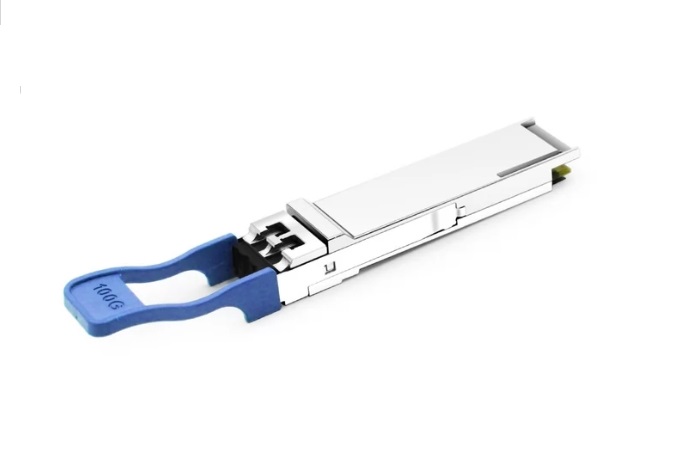
Overview of QSFP-DD and Its Benefits
QSFP-DD is the most recent advancement in QSFP technology, designed to meet the increased need for higher data rates and network performance. This module for the next generation doubles high-speed electrical interfaces and uses an eight-lane electrical interface to achieve data rates up to 400 Gbps.
One of the main features of QSFP-DD is that it can be used with previous generations of QSFP modules which makes it easier to upgrade existing network infrastructures. Furthermore, NRZ (Non-Return to Zero) and PAM4 (Pulse Amplitude Modulation) signaling are both supported by it so there is more flexibility when designing and deploying networks.
The port density achieved through using QSFP-DD modules means that switch and router ports can be utilised more effectively thus greatly increasing the scalability of data centres. Because of this operators can achieve higher throughputs while minimizing physical footprint as well as power consumption.
In a nutshell, what we have here is another solution that answers all those growing needs when it comes down to bandwidth or/and speed in processing data within modern networks thereby becoming a key element for HPC (high-performance computing) environments as well as large-scale DCs (data centers).
Breakout Cables: Expanding QSFP Capabilities
An important invention for QSFP modules, breakout cables have been known to enhance their versatility as well as functionality. These cords split a single high-speed QSFP port into several lower-speed ports thereby enabling network operators to optimize on their already existing infrastructure. Generally, a 40G or 100G QSFP connection is converted by a breakout cable into four 10G or 25G connections, respectively, which increases the number of ports available and makes it easier to use switch and router ports effectively.
Among the main advantages of using breakout cables are cost efficiency and improved scalability in networks. Organizations can meet their bandwidth requirements while still saving money on additional hardware investments through these wires. Moreover, such type of cables allows flexibility in network architecture thus making possible smooth integration with different equipment types as well as support for various network topologies.
The other thing about them is that they support hot-swappable capability, i.e., they can be replaced or upgraded without causing any downtime in a network operation. This feature becomes very useful especially when dealing with dynamic data centers where continuous uptime needs to be maintained at all times. Also, breakout cables offer reliable performance together with low latency plus minimum signal degradation due to the usage of the best materials during the manufacturing process coupled with advanced techniques.
Concisely speaking therefore; what this means is that by virtue of being cost-effective solutions for increasing port density, enhancing scalability within networks and backing flexible high-performance network designs, breakout cables greatly widen the horizons of QSFP technology hence becoming essential elements in modern day deployments of data centers.
Future Trends in QSFP Transceiver Technology
Future QSFP transceiver technology trends involve supporting higher data rates, greater integration, and improved energy efficiency. One of these is the development of QSFP-DD (Quad Small Form-factor Pluggable Double Density) modules that double the density of traditional QSFP modules and can reach 400 Gbps. This is important for hyperscale data centers and large-scale cloud computing environments.
Another trend is the use of silicon photonics. Silicon photonics technology combines photonic and electronic components on a single chip, which improves performance while reducing power consumption and overall costs. It will enable ultra-high-speed data transfer rates within data centers and save energy like never before.
Moreover, open standards & interoperability efforts are also shaping the future for QSFP transceivers; The Open Compute Project(OCP), for example, works towards standardizing transceiver designs, allowing more compatibility/flexibility among various network devices, thus making it easier to upgrade/expand as required so that they can scale fast enough with changing technological needs.
In conclusion, what will characterize next-generation QSFP transceiver tech are faster speeds supported by things like QSFP-DD innovation; this new age will also leverage silicon photonics for better power usage but promote open standards so that there’s better communication between devices from different vendors, resulting to efficient networks for high-performance scalable data centers in terms of both speed and power saving.
Frequently Asked Questions (FAQs)
Q: What is a Cisco-compatible QSFP transceiver?
A: A fiber optic module that has been designed to work with Cisco switches and routers seamlessly, providing the best performance and connectivity.
Q: What is Cisco QSFP-40G-SR4 and what does it support?
A: The Cisco QSFP-40G-SR4 is a 40 Gigabit Ethernet QSFP Transceiver Module supporting short-reach MMF (Multimode Fiber) optical networks that are specially built for high-density data center applications.
Q: How does the QSFP-40G-SR-BD transceiver operate within a network?
A: It allows data transmission in both directions over a single pair of multimode fibers thus cutting down on fiber consumption and simplifying cabling infrastructure.
Q: Why is the 850nm wavelength important in MMF optical transceiver modules?
A: Because at this wavelength, they have been shown to be most effective over short distances in high-speed data transmission applications.
Q: What types of connectors are used with Cisco-compatible QSFP transceivers?
A: For duplex connections, LC connectors are used, while MPO connectors are employed for high-density applications, thereby ensuring flexibility and reliability.
Q: Is it possible to use a QSFP cable directly attached to copper twinax with Cisco transceivers?
A: Yes, a direct attach copper Twinax QSFP cable can be used with Cisco transceivers. It offers an inexpensive and high-speed way for connecting servers and switches over short distances.
Q: What sets apart a QSFP28 module from other QSFP transceivers?
A: While the QSFP-40G-SR4 supports 40 Gigabit Ethernet, the main difference between this and any other type of QSFP transceiver is that it has 100 gigabit ethernet capabilities which offers higher bandwidths and better performance.
Q: What does the abbreviation “quad small form-factor pluggable” mean?
A: Quad Small Form-factor Pluggable (QSFP) is the name given to a small-sized module that can be plugged in or out without powering off. These modules typically have four lanes of data transmission, making them ideal for use in densely populated networks.
Q: In which ways does DDM improve the functioning of QSFP transceivers?
A: Digital Diagnostic Monitoring (DDM) allows real-time monitoring so that immediate corrective action can be taken if necessary. For example, temperature, voltage, and optical power levels, among others, are monitored to ensure excellent network performance as well as to detect faults early enough.
Q: What is the significance of having MSA-compliant compatible qsfp transceivers?
A:The Multi-Source Agreement (MSA) ensures that different manufacturers’ devices are able to work together by setting down standard rules for all parties involved thus guaranteeing smooth interoperability without any glitches arising during usage hence providing stable performance throughout various situations.
Related Products:
-
 Cisco QSFP-40G-LR4-20 Compatible 40G QSFP+ LR4 1310nm CWDM4 20km LC SMF DDM Transceiver Module
$175.00
Cisco QSFP-40G-LR4-20 Compatible 40G QSFP+ LR4 1310nm CWDM4 20km LC SMF DDM Transceiver Module
$175.00
-
 Cisco QSFP-40G-BD-RX Compatible 40G QSFP+ SR Bi-Directional 850nm/900nm 100m/150m Duplex LC MMF Optic Module Receiver Only
$165.00
Cisco QSFP-40G-BD-RX Compatible 40G QSFP+ SR Bi-Directional 850nm/900nm 100m/150m Duplex LC MMF Optic Module Receiver Only
$165.00
-
 Cisco QSFP-4X10G-LR-S Compatible 40G QSFP+ LR4 1310nm 10km MTP/MPO SMF DDM Transceiver Module
$149.00
Cisco QSFP-4X10G-LR-S Compatible 40G QSFP+ LR4 1310nm 10km MTP/MPO SMF DDM Transceiver Module
$149.00
-
 Cisco QSFP-40G-PLRL4 Compatible 40G QSFP+ PLRL4 1310nm 1.4km MTP/MPO SMF DDM Transceiver Module
$139.00
Cisco QSFP-40G-PLRL4 Compatible 40G QSFP+ PLRL4 1310nm 1.4km MTP/MPO SMF DDM Transceiver Module
$139.00
-
 Cisco QSFP-40G-CSR4 Compatible 40G QSFP+ CSR4 850nm 400m MTP/MPO MMF DDM Transceiver Module
$30.00
Cisco QSFP-40G-CSR4 Compatible 40G QSFP+ CSR4 850nm 400m MTP/MPO MMF DDM Transceiver Module
$30.00
-
 Cisco QSFP-40G-UNIV Compatible 40G QSFP+ UNIV 1310nm 150m/2km LC MMF/SMF DDM Transceiver Module
$149.00
Cisco QSFP-40G-UNIV Compatible 40G QSFP+ UNIV 1310nm 150m/2km LC MMF/SMF DDM Transceiver Module
$149.00
-
 Cisco QSFP-100G-SR4-S Compatible 100G QSFP28 SR4 850nm 100m MTP/MPO MMF DDM Transceiver Module
$40.00
Cisco QSFP-100G-SR4-S Compatible 100G QSFP28 SR4 850nm 100m MTP/MPO MMF DDM Transceiver Module
$40.00
-
 Cisco QSFP-100G-CWDM4-S Compatible 100G QSFP28 CWDM4 1310nm 2km LC SMF DDM Transceiver Module
$110.00
Cisco QSFP-100G-CWDM4-S Compatible 100G QSFP28 CWDM4 1310nm 2km LC SMF DDM Transceiver Module
$110.00
-
 Cisco QSFP-100G-4WDM-10-S Compatible 100G QSFP28 4WDM 10km LC SMF DDM Transceiver Module
$200.00
Cisco QSFP-100G-4WDM-10-S Compatible 100G QSFP28 4WDM 10km LC SMF DDM Transceiver Module
$200.00
-
 Cisco QSFP-100G-DR-S Compatible 100G QSFP28 Single Lambda DR 1310nm 500m LC SMF with FEC DDM Optical Transceiver
$180.00
Cisco QSFP-100G-DR-S Compatible 100G QSFP28 Single Lambda DR 1310nm 500m LC SMF with FEC DDM Optical Transceiver
$180.00
-
 Cisco QSFP-40/100-SRBD Compatible Dual Rate 40G/100G QSFP28 BIDI 850nm & 900nm 100m LC MMF DDM Optical Transceiver
$449.00
Cisco QSFP-40/100-SRBD Compatible Dual Rate 40G/100G QSFP28 BIDI 850nm & 900nm 100m LC MMF DDM Optical Transceiver
$449.00
-
 Cisco QSFP-100G-ER4L-S Compatible 100G QSFP28 ER4 Lite1310nm (LAN WDM) 40km with FEC,30km without FEC LC SMF DDM Transceiver Module
$800.00
Cisco QSFP-100G-ER4L-S Compatible 100G QSFP28 ER4 Lite1310nm (LAN WDM) 40km with FEC,30km without FEC LC SMF DDM Transceiver Module
$800.00

